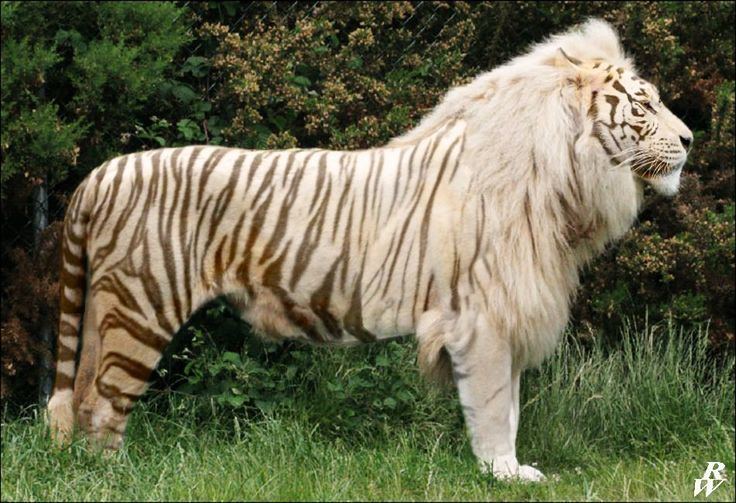Order Carnivores Rank Hybrid | Higher classification Panthera | |
 | ||
Scientific name Panthera tigris × Panthera leo Similar Liger, Leopon, Litigon | ||
Tigon
A tigon (/ˈtaɪɡən/) or tiglon (/ˈtaɪɡlən/) is a hybrid cross between a male tiger (Panthera tigris) and a female lion (Panthera leo). Thus, it has parents with the same genus but of different species. The tigon is not currently as common as the converse hybrid, the Liger; however, in the late 19th and early 20th centuries, Gerald Iles wrote that he had been able to obtain three tigons, but he had never seen a liger.
Contents

The tigon's genome includes genetic components of both parents. Tigons can exhibit visible characteristics from both parents: they can have both spots from the mother (lions carry genes for spots—lion cubs are spotted and some adults retain faint markings) and stripes from the father. Any mane that a male tigon may have will appear shorter and less noticeable than a lion's mane and is closer in type to the ruff of a male tiger. It is a common misconception that tigons are smaller than lions or tigers. They do not exceed the size of their parent species because they inherit growth-inhibitory genes from the lioness mother, but they do not exhibit any kind of dwarfism or miniaturization; they often weigh around 180 kilograms (400 lb).

This cross-breeding (between tiger and lioness) can cause difficulties during pregnancy because a tiger is a bigger cat than a lion.

Liger tigon
Fertility

Guggisberg wrote that ligers and tigons were long thought to be sterile; in 1943, however, a fifteen-year-old hybrid between a lion and an "Island" tiger was successfully mated with a lion at the Munich Hellabrunn Zoo. The female cub, although of delicate health, was raised to adulthood.

At the Alipore Zoo in India, a female tigon named Rudhrani, born in 1971, was successfully mated to an Asiatic lion named Debabrata. The rare, second generation hybrid was called a litigon. Rudhrani produced seven litigons in her lifetime. Some of these reached impressive sizes—a litigon named Cubanacan weighed at least 363 kilograms (800 lb), stood 1.32 metres (4.3 ft) at the shoulder, and was 3.5 metres (11 ft) in total length.

Reports also exist of the similar titigon /ˌtaɪˈtaɪɡən/, resulting from the cross between a female tigon and a male tiger. Titigons resemble golden tigers but with less contrast in their markings. A female tigon born in 1978, named Noelle, shared an enclosure in the Shambala Preserve with a male Siberian tiger called Anton, due to the keepers' belief that she was sterile. In 1983 Noelle produced a titigon named Nathaniel. As Nathaniel was three-quarters tiger, he had darker stripes than Noelle and vocalized more like a tiger, rather than with the mix of sounds used by his mother. Being only about quarter-lion, Nathaniel did not grow a mane. Nathaniel died of cancer at the age of 8 or 9 years old. Noelle also developed cancer and died soon after.
